Japanese vs German Knives
How do Japanese and German Knives Compare?
06.01.2020
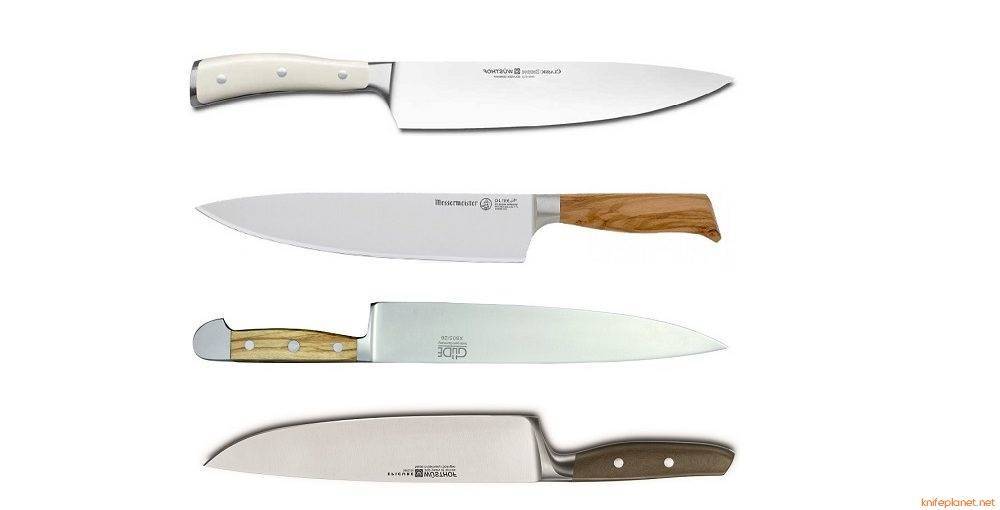
In your search for the best knives to buy, it is highly likely that you will come across both the Japanese and German knives. The discussions around the comparison between Japanese and German knives have been around for long. And since you will want to know more about these two tops, how about we do it right away?
Before delving into the crux of the matter, it would be appropriate to familiarize yourself with what makes one knife Japanese and the other German.
Japanese Knives
Detailed design, as well as precision in slicing, are among the main attributes of the Japanese knives. They are the beautiful knives you will see when shopping. The Japanese knives come with thinner blades and straighter geometry compared to their German counterparts. It is highly rare to find curvature on a Japanese knife, and steep edges of about 12 degrees are among the features of Japanese knives.
You may argue that rounded geometries are ideal for repetitive chopping and slicing, but if you are looking for precision, then Japanese knives are what you are looking for. These knives are usually used in high-end sushi restaurants. One downside to the Japanese knives includes the fact that clean cuts might prove difficult for left-handed users.
They are generally designed for right-handed users because of the sharpening on one side of the blade. This feature makes it easy to identify a Japanese knife and is usually easier to sharpen and stay sharp for long.
Given their rather thin blades, Japanese knives are delicate, and without proper maintenance, the tip can easily break. This means that buying this type of knives should also come with the desire to have a strict maintenance regimen if you want your knife to serve you for a long time.
German Knives
The giveaway feature of the German knives is the rounded geometry — bolster to tip. This curved construction gives the knives an upper hand when it comes to utility and versatility. For this reason, your better choice between Japanese and German knives when looking to buy an all-purpose knife is the latter. However, you will need to sacrifice the precision of your chops and slices.
Also, the blades of German knives are wider, in the range f 20 to 22 degrees. They have sturdy and thick bolsters to offer a better grip and a feel of more control over your operations compared to the Japanese knives. Ideally, the big knives are German.
Terms you should know
Mastery of the terminologies used in the knives’ markets will, of course, be essential if you want to understand what you are buying and, therefore, buy with confidence. Some of the main terms for you to know are:
Bolster
While some knives are a single piece of metal from handle to the blade, most kitchen knives have a bolster. This is the part that joins the handle and the blade. It is usually made of thick and robust metal to ensure not only the strength at the knife’s weakest point but also its durability.
Blade
This is the main part of the knife. It is the part from the handle of the knife to its tip. It comes in various shapes and sizes (degrees). The blade is the sharpened part that is used for cutting and is usually made from steel.
Handle
The other essential part of the knife that you cannot work without is the handle. From the name, it is the part that you hold when using the knife. The size and shape of the handles determine its versatility and utility. Often, thicker handles offer more control and better grip compared to thinner handles. Besides, shorter handles are sometimes preferred over the long ones.
Tang
At the bolster, some of the steel extends into the handle of the knife to almost its half. This piece of s is called the tang. Full tang is when the tang is the same length as the handle itself. The longer the tang, the more durable the knife will be but also with a weightier blade.
Edge
The part of the blade that’s sharpened is called the edge. It covers the area from the tip of the blade to the handle for most knives. Common variations include the straight edges and the serrated ones. In most outdoor knives, the edges are a combination – serrated on one side and straight on the other.
Grind
The angle at which the edge is sharpened is of interest to many knives’ users. This angle of sharpening is called grind. The grind could take a variety of shapes, the choice of which will be anchored on the intended purpose. The two main types are the chisel-ground knives that come with one-sided sharpening while the symmetrical grinds are roughly equal on both sides of the blade.
Comparison between Japanese and German Knives
That said, it is time to talk about the strengths and weaknesses of these knives. It is possible that from the definitions of these knives, you are already leaning towards one of them, but that would be premature. You will need to know what sets each apart beyond the basic features if you want to make an informed choice. Read on.
Purpose
The use of the knife is undoubtedly the first thing you would consider when informing your choice of a knife. As mentioned before, the German knife is your all-purpose knife on which you can count to do everything matters cutting and chopping without having to look for another knife.
They come with fatter blades with a rounded profile ready to take the beating and deliver. On the other hand, the more delicate and finer Japanese knives are best for precise chopping.
Blade material
While both the Japanese and German knives are made of steel blades, the difference in craftsmanship in the two countries defined the difference in the quality of steel in the two types of knives.
Steel is made up of carbon and iron, and since the Japanese steel blades have more composition of carbon compared to the German counterparts, they are generally the harder of the two. This gives the knives durability and sturdiness but makes them brittle at the same time.
Construction
Most German knives have full tangs with the steel material running all the way into the handle’s end. This feature makes the blades are somewhat heavy. Japanese knives have shorter tangs which work to increase control in their uses. This is achieved since the weight of the steel is more on the blade rather than the handle.
Knife’s Grind
You can almost immediately tell whether a knife is German or Japanese by looking at its grind. That is if you are choosing between the two options only. Unlike the German knives, Japanese knives have thinner edges with one-sided grinding.
That means that one side of the blade at the edge is flat while the other has a sloping profile. Therefore, these knives are the best for chopping and slicing. German knives have symmetrical grinds that can prove handy for left-handed users as well.
Blade Angle
The comparison of a German and Japanese knife can also be based on the angle of the blade. The former types of knives are broader with more significant blade angles compare to the latter. When passing through, the Japanese knives will leave little to no damage compared to the German knives.
Knife Sharpening
The efficiency in the use of any type of knife directly depends on how sharp it is. There is no point of having the best knife in the market if it is blunt, don’t you think? The knife Sharpening Stone Set — 400/1000 and 3000/8000 — is a safe knife sharpener designed to ensure no slips or accidents when sharpening and leaves your knife razor-sharp. As if that is not enough, you get a bonus gift from KnifePlanet.
Best Japanese Knives in the Market
Classic 8-inch Chef’s Knife

With a firm grip and control over the moves of the knives, the Classic 8″ Chef’s knife by Shun is, of course, one of the best Japanese knives you want to consider when shopping. It has the right weight for your slicing and chopping tasks. The handle is made from wood, and the sharp edges give you more precise slices.
KUMA 8-inch Chef Knife
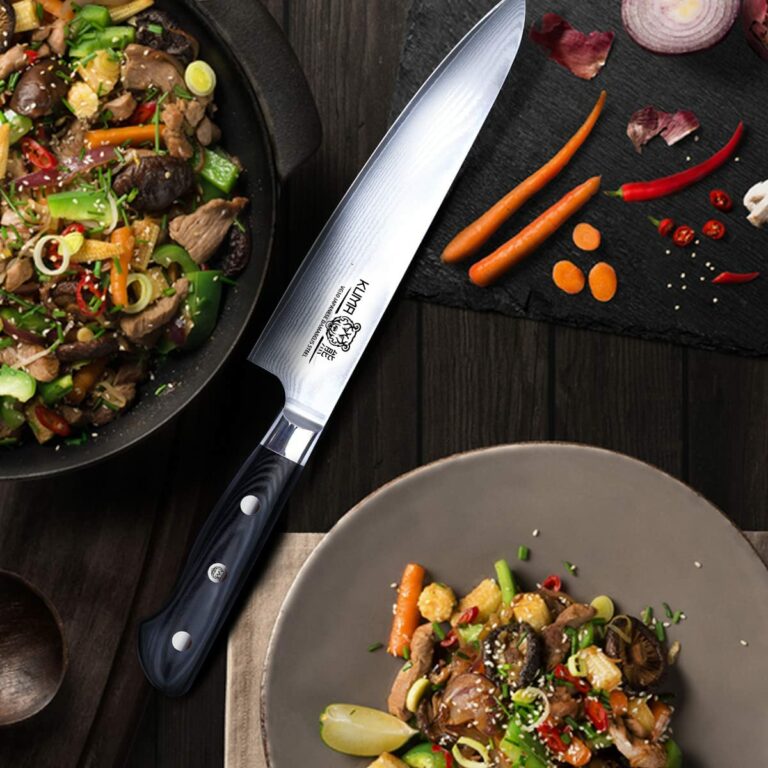
Sturdiness is the strength of the Kuma 8-inch Chef’s knife. It is made from up to 67 layers of carbon, which translates to one thing only – strength. While a high carbon concentration can make the knife more brittle, this KUMA knife is crafted to become chip resistant.
Miyabi 34373 – 203 Chef’s Knife
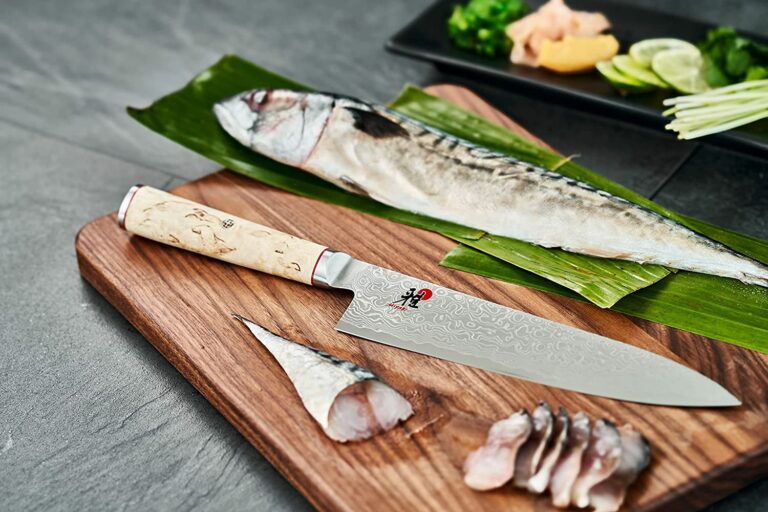
The Miyabi brand is known for making long-lasting knives, and this production from them is no different. The handles are Masur Birch and feel comfortable in hand – they are smooth with an excellent grip.
The Miyabi knife stands out thanks to its beautifully designed blade with floral patterns. It features a powder steel core with up to 100 layers of steels of different iron-carbon concentration.
Global Chef’s Knife
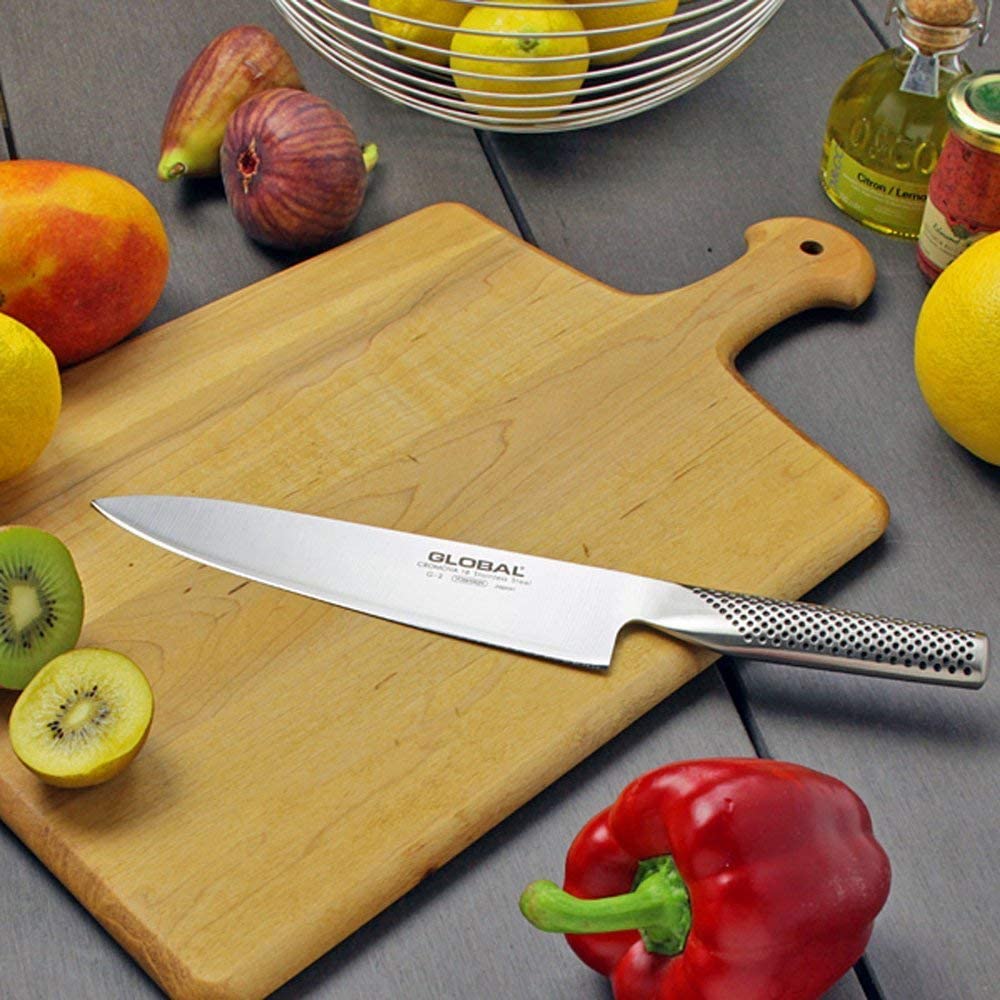
Global knives are uniquely designed in the sense that the entire knife is made from a single piece of steel, meaning that the handle extends out to form the blade. One advantage of this design is the thinness of the blade attributing cleaner slicing.
Moreover, the lack of a bolster ensures the durability of the knife, as well as its firmness. It is also the best option if you are looking for value for money on your Japanese knife.
Mac Knife MTH-80 Chef’s Knife
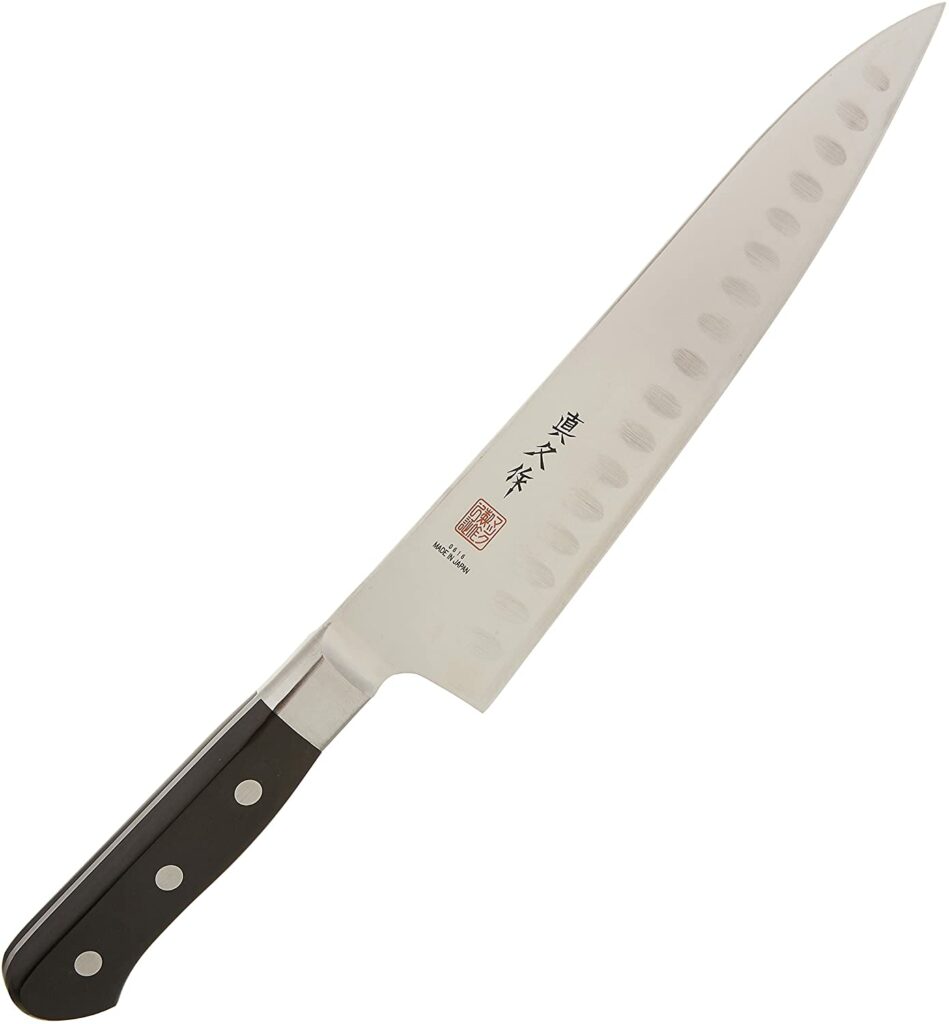
Top reviews of this knife revolve around the fact the knife is lightweight with better control of moves. The blade is made with small dimples closer to the edge to make it easy for use when cutting through sticky foods.
More specifically, cutting vegetables is much more comfortable with the Mac MTH-80. It is advisable to properly dry this knife and ensure a maintenance regimen to promotes its durability.
Best German Knives in the Market
Zwilling J.A. Henckels 14-piece Knife Set
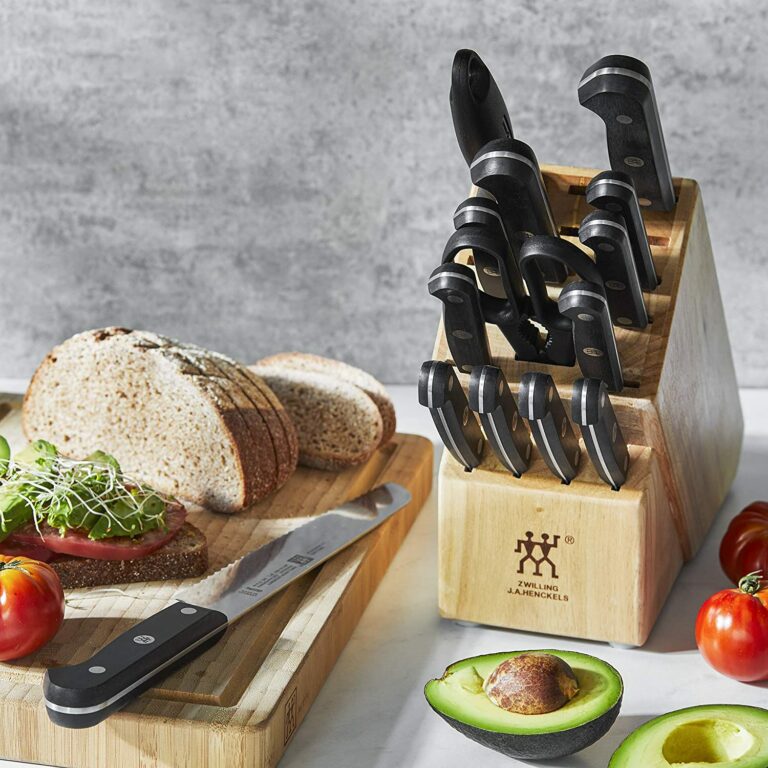
Zwilling is one of the oldest brands of German knives, which means quality and durability are two features you can be sure of. This manufacturer has carved its space in the knife niche produces knives in various lines, and this Premio 14-piece production is worth your consideration.
Thick handles of the knives give more comfortable grips and control over their use. To affirm its commitment to its customers, the manufacturer offers a lifetime warranty.
Wusthof Classic Ikon Knife

This is another quality German knife from a family-owned company that has been in the market for quite a long time. Dating back to the early 1800s, Wusthof makes all its knives in Germany and employs the best skill in their crafting and forging. For your search of the best German chef’s knife, the Classic Ikon could be what you are looking for.
Messermeister Meridian Kullenschliff Chef’s Knife
![]()
This 8-inch German knife is what every chef needs in the kitchen. It is the go-to knife whenever you want to cut through anything. It comes with an ergonomic design for better grips and handling. The blade has dimples that make cutting through sticky food easy. The Messermeister Meridian Kullenschliff Chef’s Knife has a full tang to ensure its durability.
Cangshan Z1 Series

The Cangshan Z1 Series chef’s knives are handcrafted in Germany and uses one of the most durable steel blades to ensure its sturdiness. The handle is about 5.5 inches while the blade goes to 8 inches. The long handle can be ideal for when doing a lot of repetitive chopping and slicing.
You can be sure that the edge is sharp enough for your cutting tasks and would not need too much maintenance to retain the sharpness. Besides, the knife takes elegance to a new level, and you want to have one in your kitchen.









